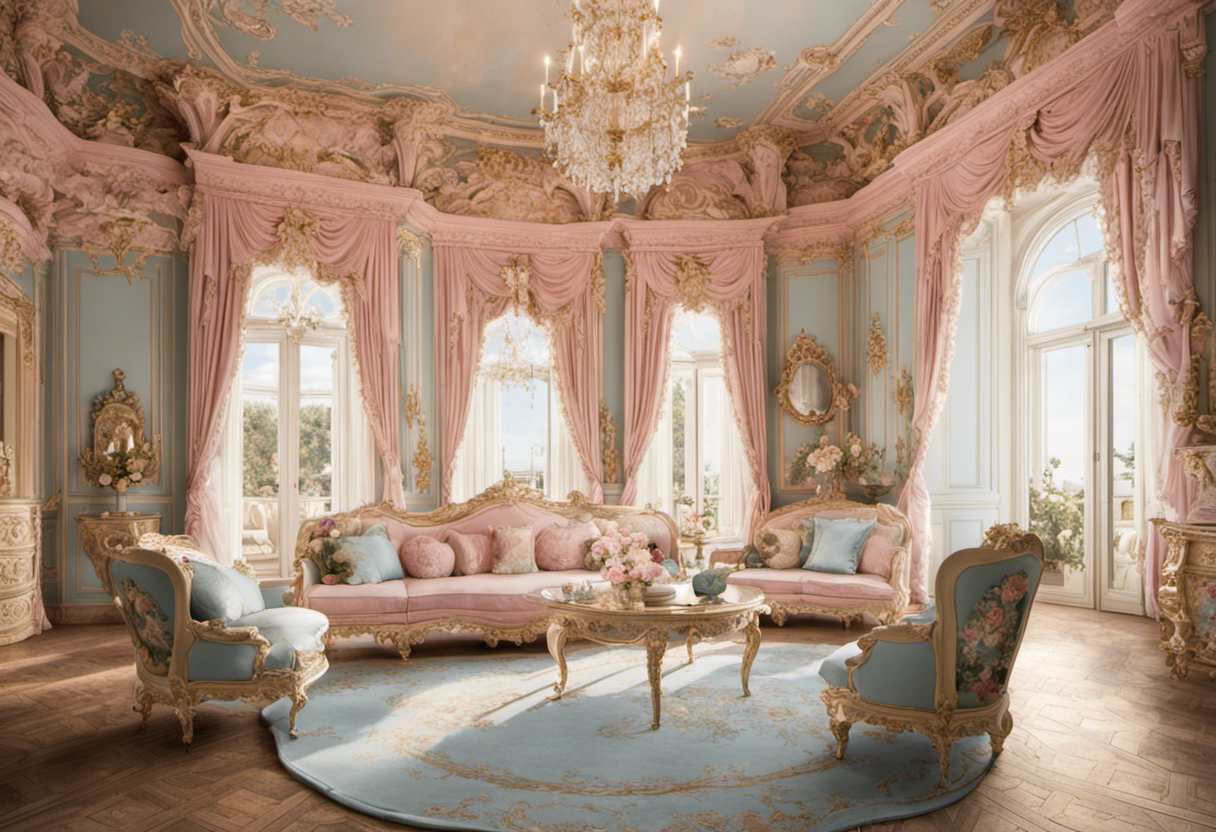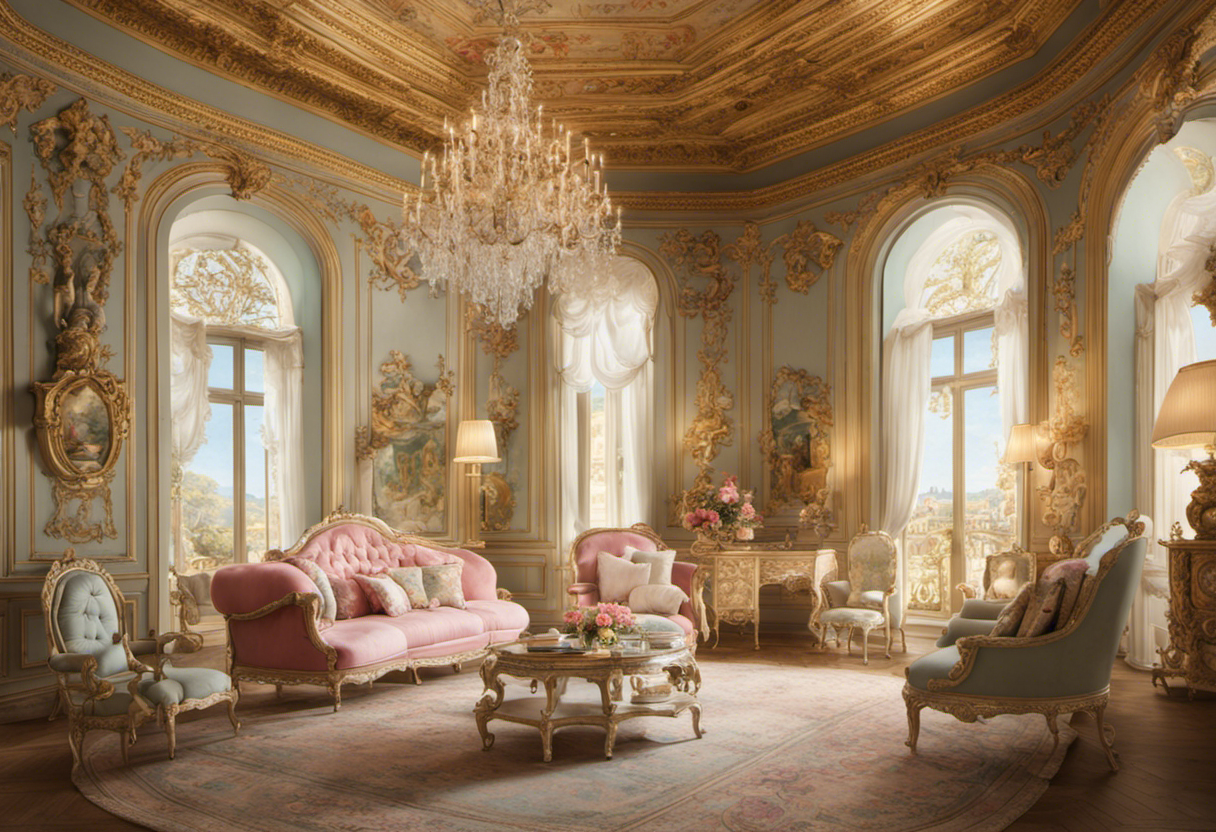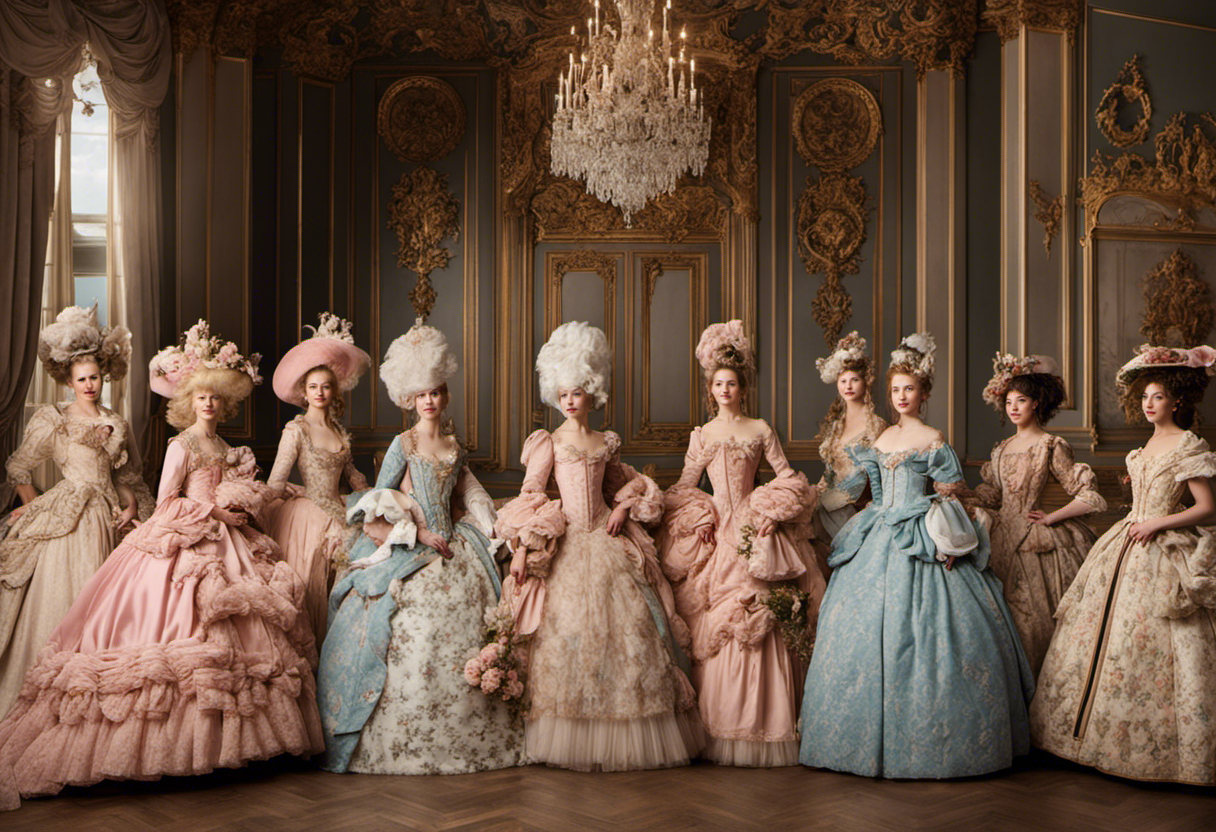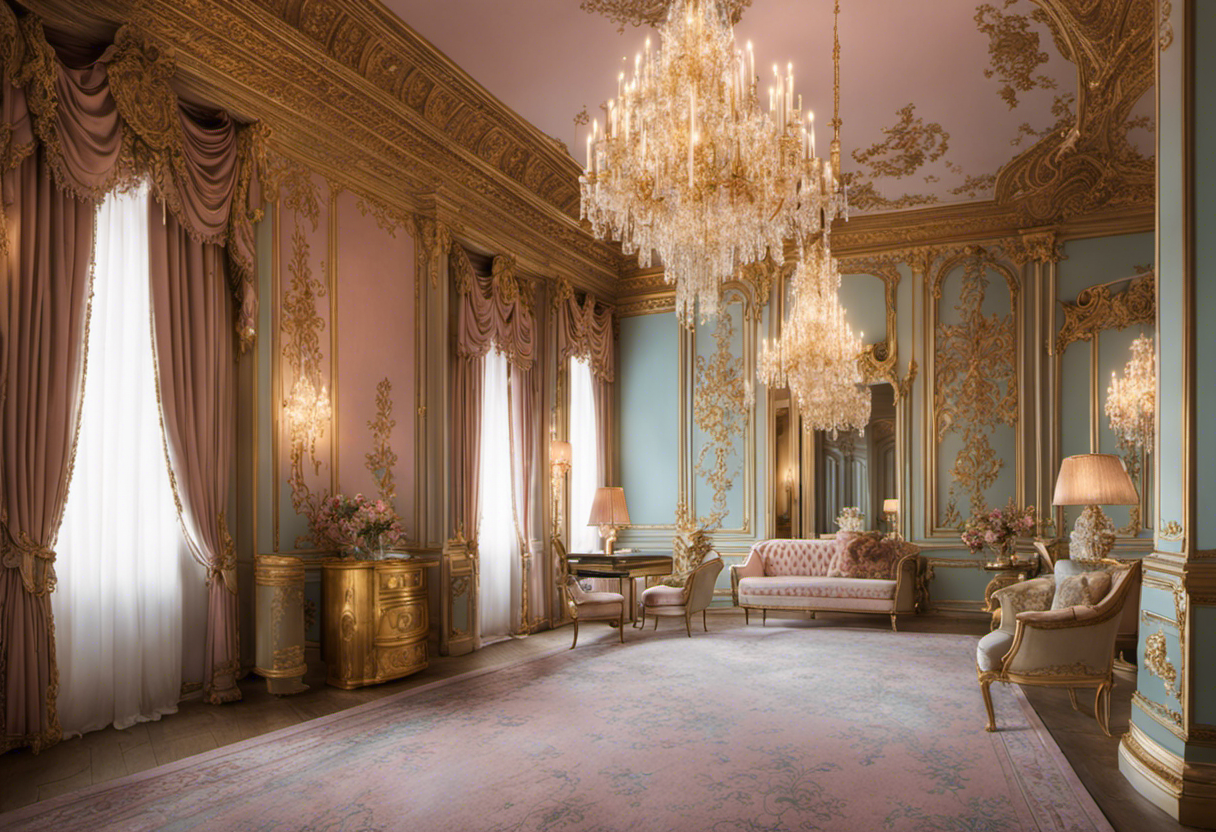The Rococo movement is a spellbinding period in art and design that captivated Europe from the early 18th century to the late 18th century. Known for its exquisite elegance and lavish ornamentation, Rococo art permeated various aspects of culture, leaving an indelible mark on architecture, fashion, and even modern design. In this article, we embark on a journey through the Rococo movement, unraveling its origins, key characteristics, and its enduring legacy.
The Origins of Rococo

Emerging in France during the late Baroque period, Rococo art was a response to the grandeur and seriousness of the previous era. It bloomed as a reaction to the rigid formalism of the Baroque style, shifting focus to a more lighthearted, decorative aesthetic. The term “Rococo” is said to have derived from the French word “rocaille,” meaning shell or pebble, which perfectly encapsulates the movement’s fondness for organic and natural shapes.
The Key Characteristics of Rococo Art

Rococo art is characterized by its playful and intricate style, marked by delicate curves, ornate flourishes, and asymmetrical designs. A key feature of Rococo is the abundant use of motifs inspired by nature, such as shells, flowers, and foliage. These motifs were often intricately woven into the artwork, creating a sense of texture and depth. Themes of love, romance, and leisure also prevailed in Rococo paintings, highlighting the movement’s emphasis on the pursuit of pleasure and the joys of life.
Immersing in Rococo Architecture
Rococo architecture, like its art counterpart, exudes elegance and extravagance. Elaborate ornaments and elaborations adorn the facades of Rococo buildings, creating a sense of whimsy and lightness. One of the most famous examples of Rococo architecture is the Palace of Versailles in France. Its opulent interiors, adorned with gilded furniture, pastel-colored walls, and decorative motifs, exemplify the grandeur and refinement of the Rococo style. The exquisite design of Rococo buildings aimed to transport viewers into a world of beauty and delight.
The Influence of Rococo on Fashion

The influence of the Rococo movement extended beyond the realms of art and architecture and made its way into the world of fashion. The fashion of the Rococo era mirrored the richness and gracefulness of the art style. Women’s fashion, in particular, saw the emergence of sumptuous and voluminous dresses, adorned with delicate embroidery, lace, and ribbons. The emphasis was on creating a soft, feminine silhouette, with wide skirts and fitted bodices. Pastel colors and intricate patterns dominated Rococo fashion, further enhancing its ethereal and romantic allure.
The Legacy of Rococo in Modern Design

Though the Rococo movement reached its apex in the 18th century, its influence can still be felt in modern design. The elements of elegance, intricacy, and playfulness that characterize Rococo art continue to inspire designers today. From architecture that incorporates decorative motifs and ornate details to fashion collections that take cues from the ethereal and romantic aesthetic, traces of the Rococo movement can be found in various aspects of contemporary design.
Unveiling the Beauty of Renaissance Art: A Journey through Leonardo da Vinci’s and Michelangelo’s Work
The Impact of Pop Art on Modern Culture
The Evolution of Cubism: How Picasso Redefined Art with Geometric Shapes
In conclusion, the Rococo movement stands as a testament to the power of art to transform and inspire. Through its elegant and whimsical style, it brought a sense of lightness and joy to a world that was craving beauty and pleasure. The legacy of Rococo can be seen in the ornate architecture, the intricate fashion of the time, and its continued influence on modern design. By immersing ourselves in the enchanting world of Rococo, we gain a deeper appreciation for the exquisite craftsmanship and timeless elegance of this remarkable period.
